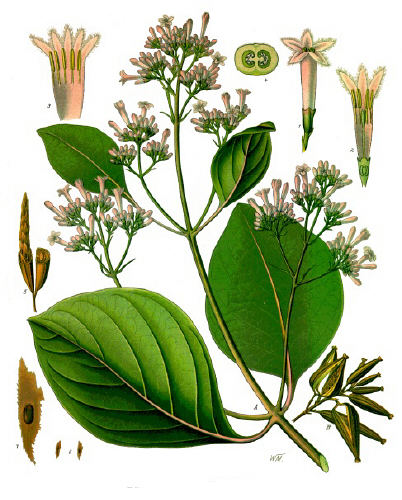 |
Cinchona (Cinchona
calisaya) Cinchona is native to Central and
South America. The use of cinchona against malaria was
discovered
by serendipity: an earthquake in Peru resulted in the
falling of trees
into the lake from which, an Indian, urged by his thirst
in an attack
of malaria drank and cured. Cinchona was named for the
Spanish
Countess Cinchon, the wife of the Viceroy of Peru who
recovered
from malaria by using the bark. The active ingredient
of the bark is
an alkaloid quinine first isolated in 1820 by the French
chemists
J.B. Caventous and P.J. Pelletier. Synthetic quinine
became available
in 1944 and from these came various quinine based drugs
such as
chloroquine and hydroxychloroquine. Apart from
malaria, they are
used to treat conditions such as rheumatoid arthritis.
Overdose of
quinine can cause retinal artery occlusion and prolonged
use of
chloroquine and to certain extent hydroxychloroquine
is associated
with cataract and maculopathy. |
| m |
 ... ... ... ... |
0 |